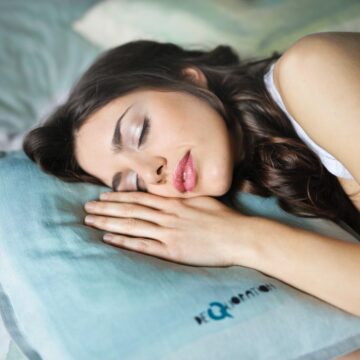
-
- Basic good sleep hygiene practice involves sleeping in a dark and cool room, limiting caffeine intake and screen time before hitting the sack, and having a regular bedtime.
- Scents like lavender, chamomile, and peppermint can help you get better sleep.
- ASMR is a new sleeping trend that involves listening to or watching relaxing clips of people doing daily, calming tasks, like folding towels or brushing the hair.
Something to Add to the Usual Remedies
If you still have trouble sleeping even if you already have the usual “good sleep hygiene” practices (e.g., keeping your bedroom dark and cool, avoiding caffeine and screen time before bed, and having a regular bedtime), consider these new things that people are doing to fall asleep.
1. Aromatherapy

Science says certain scents can make you sleep better. According to a review of several studies, scents like lavender, chamomile, peppermint, and marjoram, and orange oil, help you get better sleep.
2. Acupressure

This traditional Chinese medicine practice involves putting pressure at specific points on your body using your fingers and thumb. According to researchers, acupressure can help you doze off quicker and for longer.
3. ASMR

Autonomous sensory meridian response refers to the tingling sensation along the neck’s scalp and back brought about by certain sights and sounds. The audio and visuals available online are of people doing daily tasks that are calming, like brushing the hair, folding towels, or whispering. ASMR helps some people relax and fall asleep.
4. Listen to the Colors

Some people use a sound app or machine to improve their sleep environment. But did you know that masking noise comes in different hues depending on the level of sound frequency? According to one study, pink noise improved older people’s deep sleep. There are audio clips you find online and app settings that will help you see which sound shades will work for you.
5. Paradoxical Intention

People sometimes have trouble falling asleep because they worry about not getting to sleep. Paradoxical intention is a cognitive-behavioral technique that helps fight that anxiety. The technique is to stop trying to fall asleep and stay up as long as possible to ease the anxiety around sleep and allow you to doze off.
6. Sleep Restriction

Another type of behavioral therapy is sleep restriction, which entails two weeks of having a rigid bedtime and wake-up time, without napping. It may cause tiredness at first, but according to studies, this approach helps improve insomnia.
7. Practice Forgiveness

Certain emotions like guilt and regret may keep you up at night, says research. And according to science, forgiving others can help you get better sleep, and being compassionate towards yourself might improve insomnia.
8. Weighted Blanket

Weighted blankets have plastic or metal pellets inside to give them a uniform weight. According to a Swedish study, people who used weighted blankets had longer restful sleep and felt more refreshed when they woke up.
9. Visualization

Also called guided imagery, visualization involves using all your senses to focus on a calming idea: what you hear, see, smell, and taste in that particular scene you’re imagining. Once your mind drifts to your worries, steer your thoughts back to your peaceful scene.
Source: WebMD
